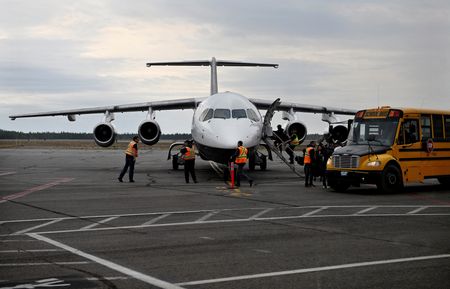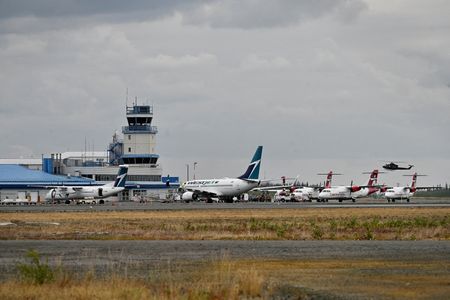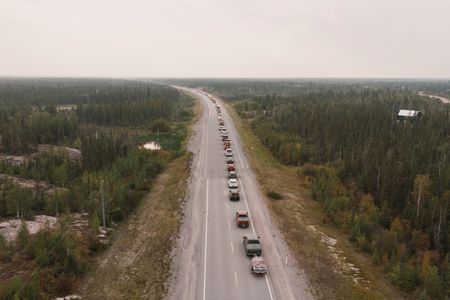By Allison Lampert and Doyinsola Oladipo
(Reuters) – Canadians vented their frustration against airlines on social media last week after prices of commercial flights out of Yellowknife soared up to 10-fold above normal just as residents were ordered to evacuate due to raging wildfires.
Carriers including Air Canada have pledged to cap prices on Yellowknife flights as most of its roughly 20,000 residents evacuated due to a large approaching blaze. But that can take time, analysts say, since airlines must manually override automated systems that raise fares in the case of higher demand.
Here is a look at how airlines deal with a sudden surge in demand on a particular route.
DISASTERS VERSUS HIGH DEMAND
Airlines set a range of ticket prices based on factors like purchase timing and demand. They then allocate seats to each fare, explained Chris Amenechi, founder of startup SeatCash, which offers subscribers a product that predicts future flight prices.
A demand spike would lead lower-priced fares to sell out and shift to higher priced fares.
“The system doesn’t know it’s a disaster and when it happens, then companies have to make a decision to override the system,” said Amenechi, a former commercial airline executive.
“In a place like Yellowknife, there are (limited) flights and if all the flights are full you can just imagine how expensive it’s going to be because nobody has an open seat.”
He said in some cases only one first or business class seat may be available.
CAN CARRIERS CAP AGGREGATED FARES?
Air Canada said in a statement that social media examples of flights for C$4,500 ($3,322) from Yellowknife to Calgary were aggregated fares from booking websites. Some of the flights involved several stops operated by other carriers, with some trips lasting as much as 21 hours, compared with a two-hour normal non-stop flight to Calgary.
“We endeavour to get these aggregated fares corrected where possible,” Air Canada said.
Air Canada said it canceled a business class fare of around C$1,000 and made it into a regular fare on one flight out of Yellowknife. They also said they refund passengers who purchase a fare before it is corrected.
Travel site Expedia Group said air partners set flight prices and availability on its site. “Airlines are free to adjust the prices and availability they display.”
Air Canada had a Tuesday flight from Yellowknife to Calgary for as low as C$303 on Saturday. Rival WestJet Airlines had a direct flight of C$122.98 for the route on Monday.
Airlines still have power to lower prices during disasters. Several U.S. carriers offered $19 fares for a 40 minute evacuation flight from Maui to Honolulu to help those fleeing from wildfires this month, where at least 114 died.
“In the Maui case, it’s very clear that U.S. carriers are going out of their way to be good neighbors and evacuate those residents and visitors,” said U.S. aviation analyst Robert Mann. “Those $19 fares were manually capped … at carrier direction.”
Mann suggested U.S. carriers may have learned from a 2015 derailment on an Amtrak train from Washington to New York that drove up airfares due to higher demand, generating accusations of price gouging.
($1 = 1.3546 Canadian dollars)
(Reporting By Allison Lampert and Doyinsola Oladipo in New York; Editing by Denny Thomas and Josie Kao)







